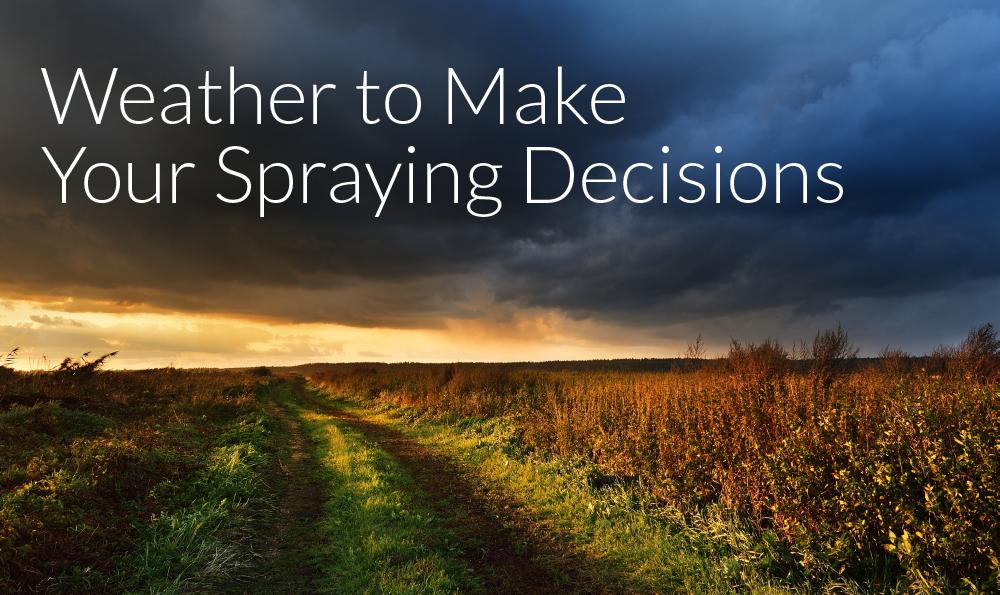
No matter the size of your operation, effective herbicides and pesticide application can be vital to your success. Whether you’re in the sweltering southeast or the moderate northwest, you have to consider the elements when deciding when to spray.
Get wet!
The moisture from a heavy overnight dew provides plants with additional moisture, allowing them to increase metabolism and growth rate. Good news for a crop. However, the not-so-good news is that frequent dew on plants, or lengthy exposure to any sort of moisture, can open the door to crop diseases.
Many hobby farmers and cattlemen prefer to spray herbicides and pesticides in the morning, when the wind is light. Morning dew makes this decision even smarter, because studies have found that wet plant leaves have a high herbicide absorption rate. Simply put, this means that herbicide stays on wet plants longer, leaving more time for weed killer to be absorbed.
On days when temperatures are high and the humidity is low, the leaves of crops can start to curl as the plant conserves moisture. During these times, the plant also resists absorption of herbicides or pesticides.
Windy weather makes spraying a no-no
Deciding when is the right time to apply chemicals is not a perfect science. Because winds are at their lowest an hour or two after sunrise and a few hours before sunset, it’s the best time to spray. Lighter winds minimize the drift from herbicides, pesticides or fertilizer. During a 2014 study, weed specialists from the University of Georgia, Louisiana State University, Mississippi State University, North Carolina State University and the University of Tennessee found that applying weed killer on a cotton crop at 5 a.m. had a 16 percent success rate, while the same application done at 11 a.m. had a 56 percent success rate.

For better or worse, farmers spend a good part of the day outside in the elements. A welcome breeze can make a hot, muggy day a little easier to take. However, that very same comfortable wind may keep your UTV sprayer in the barn for the day. Windy weather is one of the least favorable times to spray weed killer or pesticide.
“We recommend spraying crops, pasture or turf when wind speeds are slower than 7 mph,” says Mike Massey, president of Ragan & Massey. “Higher wind speeds lower the chances of the chemicals making good contact with the targeted plant and, even worse, drifting chemicals onto sensitive crops nearby.”
If the wind is forecasted to change or be variable, make sure to allow a larger buffer or safety zone to protect trees or plants on or near your property from herbicide damage. Before starting any spraying job, write down the time, current wind direction and speed. Recording wind speed and direction on the day you spray could help protect you in the event of any legal litigation due to crop loss or tree injury. Not everyone has an anemometer sitting around, but that doesn’t have to stop you from taking accurate measurements. Up-to-date wind direction and speed readings are available on any tablet or smartphone from a network of 50,000 weather stations around the country with the WindAlert app. WindAlert (or a similar app) provides data from the weather station closest to your current location. While you’re spraying, again check your weather app for the nearest wind direction and speed and record these values. When you’re finished, check the app again and record the time, wind direction and speed.
Follow Ragan & Massey!
Be sure to follow Ragan & Massey on Facebook for daily updates, and check back here every week for more in-depth expertise, advice and product updates.
